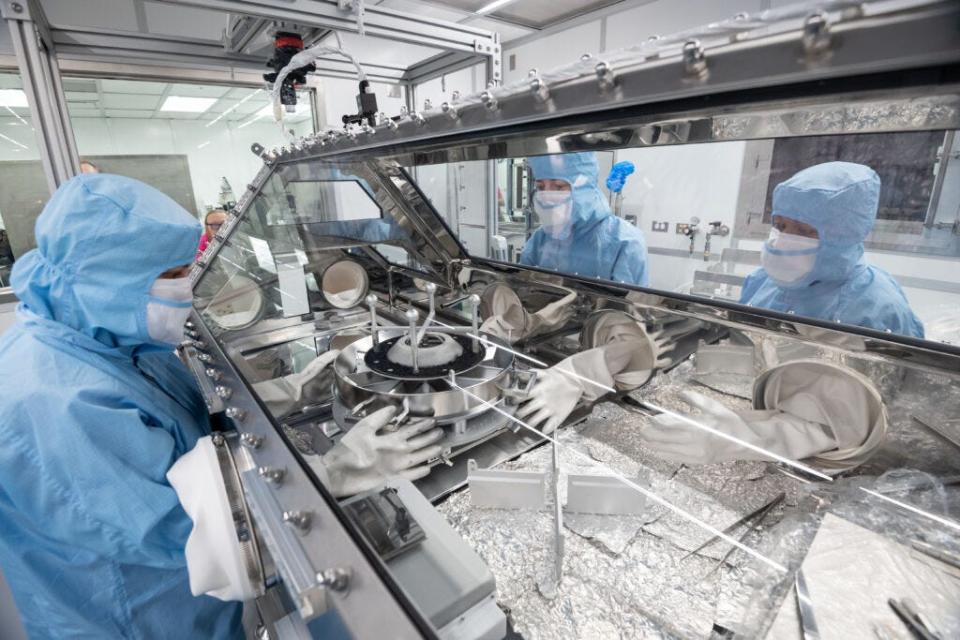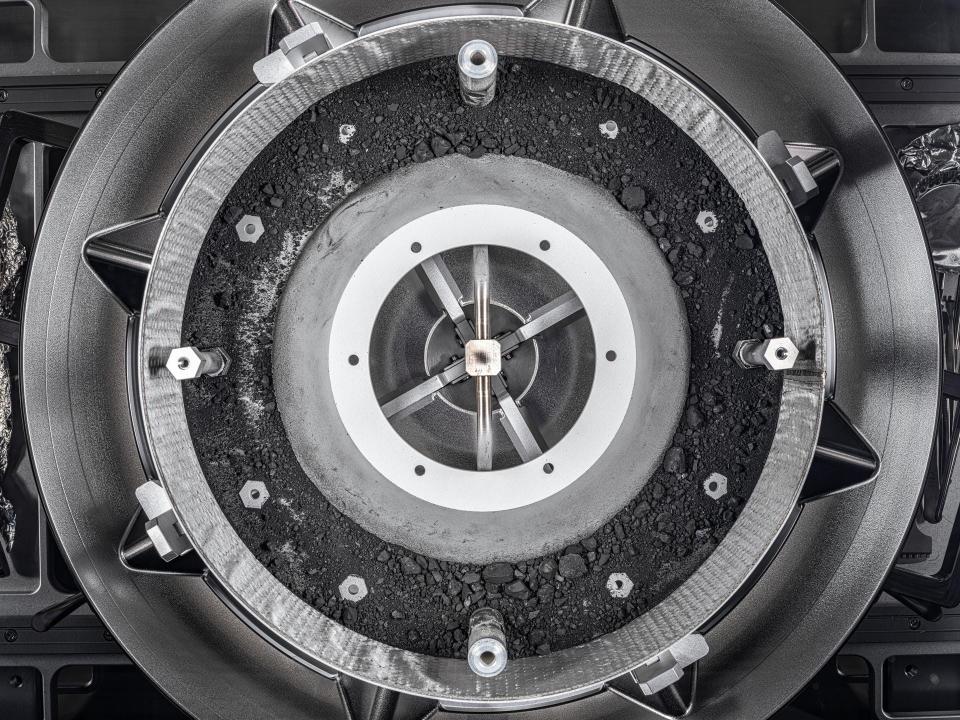NASA has double the asteroid rubble it expected to receive from space mission

The first asteroid samples acquired by NASA from deep space contain double the amount of material scientists were expecting to get, according to a press release.
"The OSIRIS-REx sample is the biggest carbon-rich asteroid sample ever delivered to Earth and will help scientists investigate the origins of life on our own planet for generations to come,” said NASA Administrator Bill Nelson in a statement. “Almost everything we do at NASA seeks to answer questions about who we are and where we come from."
The delivery was made last fall, but according to NASA, it took longer than expected to get all of the samples. The disassembly of the Touch-and-Go Sample Acquisition Mechanism, TAGSAM, the system used to collect the samples, was paused because of two stuck fasteners.

After developing new tools, scientists with the Astromaterials Research and Exploration Science, ARES, division were able to open the capsule and collect the rest of the sample.
NASA said it will store 70% of the sample at Houston's Johnson Space Center for further research by scientists from around the world.
"Later this spring, the curation team will release a catalog of the OSIRIS-REx samples, which will make the asteroid sample available for request by the global scientific community," said NASA in the press release.
What happened, according to NASA

In September 2023, NASA received an extraterrestrial delivery from its OSIRIS-REx spacecraft as it flew past Earth. It sent a capsule with the asteroid samples that were collected in 2020,
The craft released the capsule from 63,000 miles away, and it landed four hours later on a remote expanse of military land, AP News reported Inside the capsule was half a cup of 4.5 billion-year-old samples from the asteroid Bennu.
Osiris was already on its way to collect samples from another asteroid, AP reported, when the Bennu sample was strapped to a helicopter and taken to a temporary clean room at the Defense Department’s Utah Test and Training Range before being sent to NASA’s Johnson Space Center.
By October, NASA had collected 2.48 ounces, 70.3 grams, of rocks and dust from the outside of the canister that held the TAGSAM, but scientists paused their research because of the stubborn fasteners that wouldn't open. The team needed the spacecraft to collect around 2.12 ounces and considered the mission a success despite the delay.
By January 2024, they developed tools tools remove the fasteners from the TAGSAM safely.
In February, NASA announced it completely opened the TAGSAM and acquired the rest of the sample. A total of 4.29 ounces was collected from the asteroid.

What is the OSIRIS-REx and what's its mission?
The OSIRIS-REx, which stands for Origins, Spectral Interpretation, Resource Identification, Security-Regolith Explorer, is a van-sized craft with solar panels that power it.
On its visit to Bennu, it collected its samples of the asteroid’s surface, and sealed it into a 3-foot-wide container called the Sample Return Capsule. The capsule was equipped with a heat shield to protect it when it delivered its sample to Earth.
The mission, excluding launch, cost $800 million.
"NASA missions like OSIRIS-REx will improve our understanding of asteroids that could threaten Earth while giving us a glimpse into what lies beyond," said Nelson. "The sample has made it back to Earth, but there is still so much science to come – science like we’ve never seen before.”
Julia is a trending reporter for USA TODAY. She has covered various topics, from local businesses and government in her hometown, Miami, to tech and pop culture. You can follow her on X, formerly known as Twitter, Instagram and TikTok: @juliamariegz.
Contributing: George Petras, Ramon Padilla and Janet Loehrke, USA TODAY.
This article originally appeared on USA TODAY: NASA's sample of asteroid rubble double the amount expected